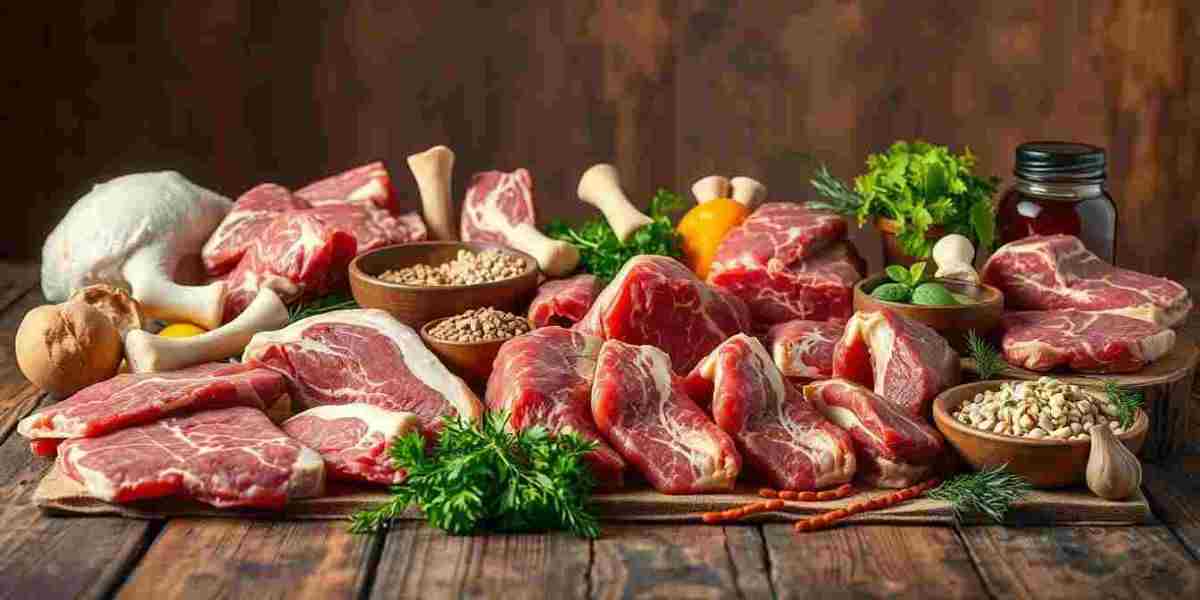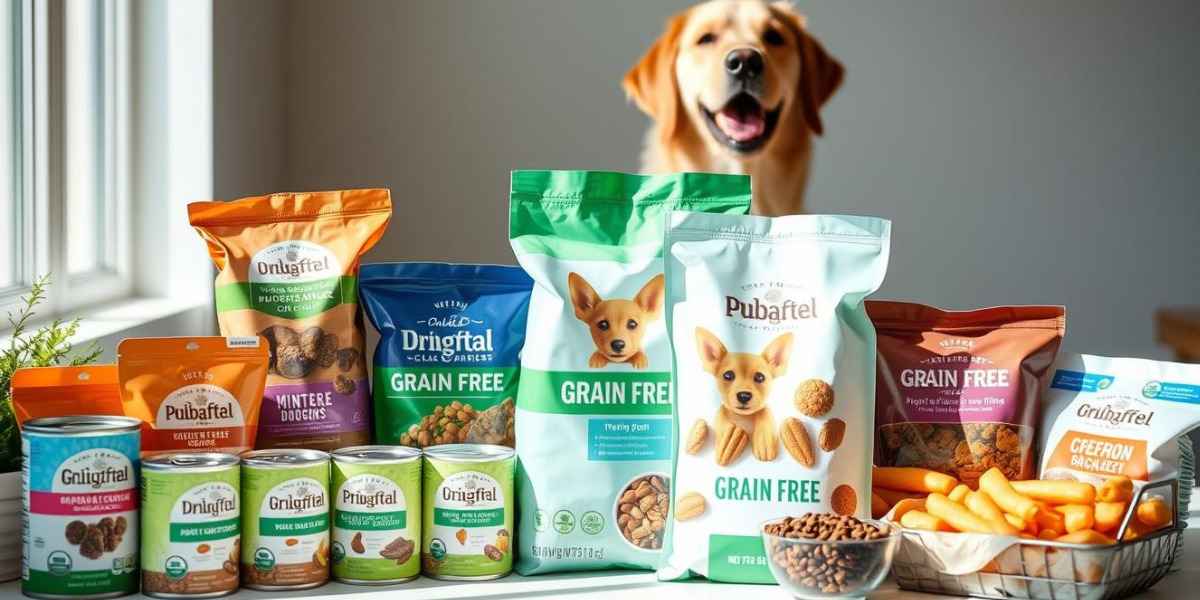We all want the best for our pets, and a healthy diet is key. Raw pet food is becoming popular because it’s natural. It’s made from unprocessed ingredients, giving pets the nutrients they need.
More pet owners are choosing raw pet food for their pets. It offers many benefits, like better digestion and more energy. This makes it a great choice for keeping your pet happy and healthy.
Introduction to Raw Pet Food
In this article, we’ll explore raw pet food and its benefits. We’ll look at why pet owners are choosing it for their pets. It’s all about a healthy and natural diet.
Also Read
Key Takeaways
Raw pet food provides a natural pet nutrition approach
Raw pet food is made from unprocessed ingredients
Raw pet food can improve digestion and boost energy
Many pet owners are turning to raw pet food for its numerous benefits
Raw pet food is a great way to keep your pet happy and healthy.
Understanding Raw Pet Food: A Natural Approach to Pet Nutrition
We all want the best for our pets, and a healthy diet is key. Raw pet food is becoming popular, with many choosing fresh and organic options over processed food. But what makes raw food different, and why is it better?
Pet nutrition has changed, moving towards natural and holistic diets. Pet owners are looking for raw food without harmful additives. This way, pets get the nutrients they need from whole, unprocessed foods.
Key Components of a Raw Diet
Fresh, organic ingredients
No preservatives or additives
Whole, unprocessed foods
Raw pet food is a natural, nutritious choice compared to processed food. It offers pets the benefits of fresh, organic ingredients. This can greatly improve a pet’s health, from better digestion to more energy.
The Science Behind Raw Feeding Benefits
Raw feeding has become more popular in recent years. It’s known for its potential to give pets balanced nutrition. A well-planned raw diet can improve a pet’s digestive health and boost their immune system. Studies show that a diet full of protein, vitamins, and minerals is good for pets’ health.
Some key benefits of raw feeding include:
Improved digestive health
Increased energy levels
Shinier coats and healthier skin
Reduced risk of chronic diseases
A balanced diet with raw food ensures pets get all the nutrients they need. To get these benefits, pets should eat a variety of raw foods. This includes meats, fruits, and vegetables.
Understanding the science behind raw feeding helps pet owners make better diet choices. A raw diet can be a great way to keep pets healthy and happy. It promotes overall health and wellbeing.
Essential Components of a Raw Pet Food Diet
Understanding the key parts of a raw pet food diet is vital. A good raw diet for dogs and cats must have various protein sources and essential nutrients. It also needs supplements to keep pets healthy. The goal is to balance minerals and vitamins for their nutritional needs.
A well-thought-out raw diet can greatly benefit pets. It can improve digestion, make their skin healthier, and boost their energy. Pet owners should include different proteins like chicken, beef, and fish. They should also add vitamins and minerals for a balanced diet.
Protein sources: chicken, beef, fish, and lamb
Necessary nutrients: vitamins A, D, and E, as well as minerals like calcium and phosphorus
Supplements: omega-3 fatty acids and probiotics
By adding these elements to a raw diet, pet owners can ensure their pets get the nutrients they need. Always talk to a vet before changing your pet’s diet.
Getting Started with Raw Pet Food: A Step-by-Step Guide
Starting your pet on a raw diet means picking a top-notch pet food. A fresh diet can boost your pet’s health. But, it’s key to ease them into it to prevent stomach issues.
First, look into different raw pet foods. Pick one that fits your pet’s needs well. Think about the protein sources, nutrients, and any supplements needed. Talking to your vet can also help a lot.
Here’s how to slowly introduce your pet to raw food:
Begin by adding a bit of raw food to their usual diet
Slowly increase the raw food amount over 7-10 days
Keep an eye on how they react to the new food, looking for any upset stomach or allergies
It’s important to handle and store raw pet food safely. Always wash your hands well after touching it. Keep it in a sealed container in the fridge.
By following these steps and choosing the right food, your pet can do great on a fresh diet. Always put your pet’s health and safety first. If you’re unsure, always check with your vet.
Safety Considerations and Best Practices
When it comes to raw pet food, safety is key. As a pet owner, it’s important to handle and store it right. This way, you can keep your pet safe and healthy.
First, understand the need for proper storage and handling. Store raw pet food in a designated area, like a freezer or fridge. Always use clean hands and utensils. These steps help lower the risk of contamination and keep your pet safe.
Always wash your hands before and after handling raw pet food
Store raw pet food in a sealed container to prevent cross-contamination
Keep raw pet food separate from other foods and utensils
By following these guidelines and using a reliable raw feeding guide, you can ensure your pet’s health. This way, you can enjoy the benefits of raw pet food while keeping your pet safe.
Transitioning Your Pet to a Raw Diet
Switching to a raw pet food delivery is a big step. It’s important to do it slowly to avoid upset stomachs. Start by adding a little raw food to their usual diet. Then, slowly add more raw food over time.
This slow introduction helps your pet’s stomach get used to the new food. It’s also a chance to watch how they react and make diet changes if needed. Remember, it might take weeks or even months for your pet to fully adjust.
Start with small amounts of raw food and gradually increase the proportion
Monitor your pet’s health and adjust the diet as needed
Choose a high-quality raw pet food delivery service that provides fresh and nutritious food
Be patient and allow your pet’s digestive system to adjust to the new food
By following these tips, you can make the switch to a raw diet easier for your pet. This change can greatly improve their health and well-being.
Common Myths and Misconceptions About Raw Pet Food
Many pet owners have misconceptions about raw pet food. They worry it’s not safe for their pets. But, with a raw feeding guide, owners can ensure their pets get the benefits while avoiding risks.
Raw pet food can improve digestion and boost energy. It also makes skin and coats healthier. A guide helps owners transition their pets to a raw diet safely and effectively.
Raw pet food is not nutritionally balanced
Raw pet food is too expensive
Raw pet food is not safe for pets
Veterinarians offer valuable insights on raw pet food. They help weigh the costs and benefits and address safety concerns. This way, owners can decide if a raw diet is best for their pets.
Selecting Quality Raw Pet Food Products
Choosing the right raw pet food is key for your pet’s health. Look for premium pet food brands. This ensures your pet gets the nutrients they need.
Quality raw pet food should have fresh, natural ingredients without additives. It’s important to pick brands known for their high standards and safety.
When picking raw pet food, read the labels carefully. Look for high protein and essential nutrients.
Here are some tips for finding quality raw pet food:
Research the brand’s manufacturing standards and quality control.
Check for certifications from trusted organizations.
Read reviews and testimonials from other pet owners.
Get advice from veterinarians or pet nutritionists.
By following these tips, you can choose the best raw pet food for your pet. This ensures they get the nutrients they need to stay healthy.
Creating a Balanced Raw Feeding Schedule
Creating a balanced raw feeding schedule is key for a healthy pet diet. A raw pet food diet is natural and mimics their ancestral diet. It’s important to plan and monitor their diet carefully to ensure they get all the nutrients they need.
A good raw feeding schedule includes portion control, meal planning, and watching how your pet responds. You might need to adjust the amount of food, add new ingredients, or change how often you feed them.
Some important things to think about when planning a balanced raw feeding schedule are:
Calculate your pet’s daily caloric needs based on their age, size, and activity level
Choose a variety of raw pet food ingredients for a wide range of nutrients
Slowly introduce new foods to avoid digestive issues
Keep an eye on your pet’s weight, energy, and health to make changes as needed
By following these tips and sticking to a healthy diet, your pet can thrive on a raw pet food diet. Always focus on natural pet nutrition and talk to a vet if you have any diet or health concerns.
Conclusion: Embracing the Raw Food Journey for Your Pet’s Health
By following this guide, you’ve learned how a raw pet food diet can change your pet’s life. It offers many benefits, like a healthy digestive system and better skin and coat. It also boosts their energy.
Starting a raw diet might seem hard at first. But, talking to your vet can help. They can guide you on the best way to start. This journey can be rewarding for both you and your pet.
Your pet’s health is key, and a balanced raw diet can make a big difference. Take this natural path and watch your pet thrive. Their health and happiness are the best rewards.
FAQ
What is raw pet food, and how is it different from traditional pet food?
Raw pet food is made from unprocessed, whole foods. It includes raw meat, organs, bones, and more. It’s different from traditional pet foods, which are often processed and contain additives.
What are the benefits of feeding my pet a raw food diet?
A raw diet can improve digestion and skin health. It also boosts energy and helps with weight management. It’s closer to what wild animals eat, making it more natural for pets.
Is a raw diet safe for my pet?
A raw diet can be safe if prepared correctly. Follow food safety tips to avoid contamination. Always talk to your vet to make sure it’s right for your pet.
How do I transition my pet to a raw food diet?
Start by mixing a little raw food with their current diet. Slowly add more raw food over weeks. This helps their stomach adjust and prevents upset.
What are the essential components of a balanced raw pet food diet?
A good raw diet includes quality proteins like meat and bones. It also needs vitamins and minerals for health. A vet nutritionist can help make sure it’s balanced.
How can I find reputable raw pet food brands and products?
Look for brands with high-quality ingredients and strict safety standards. Check their manufacturing and ingredient sources. Your vet can also suggest good brands.
Are there any risks or drawbacks to feeding my pet a raw diet?
Raw diets can be risky if not done right. There’s a chance of contamination or nutritional problems. Always work with your vet to ensure safety and balance.
How do I create a balanced raw feeding schedule for my pet?
Think about your pet’s age, activity level, and health when planning meals. Make sure the diet has the right mix of nutrients. Watch how your pet responds and adjust as needed.









